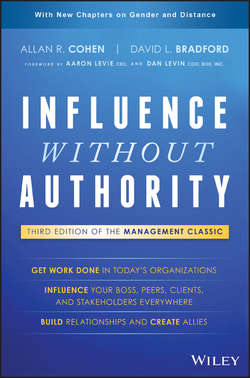Читать книгу Influence Without Authority - Cohen Allan R. - Страница 14
На сайте Литреса книга снята с продажи.
PART II
THE INFLUENCE MODEL
CHAPTER 2
THE INFLUENCE MODEL: TRADING WHAT THEY WANT FOR WHAT YOU'VE GOT (USING RECIPROCITY AND EXCHANGE)
ОглавлениеI have done enough for you, Apollo; now it's your turn to do something for me.
– Rough translation of inscription on a Greek statue of the God Apollo, 700–675 B.C., demonstrating ancient understanding of the concept of reciprocity.2
Come that's very well – very well indeed!
Thank you, good sir – I owe you one.
– George Colman, The Poor Gentleman, Act IV, Scene 1, (1762), demonstrating an artistic understanding of reciprocity in the 18th century
To address the kinds of challenges we have described in Chapter 1, how can you influence those over whom you have no authority? The short answer is that to have influence, you need resources that other people want to trade for what you want. This key to influence is based on a principle that underlies all human interaction, the Law of Reciprocity.
2
This inscription from a statue called Mantiklos Apollo was cited by Janet Tassel in “Mighty Midgets,” Harvard Magazine (May/June, 1989).
